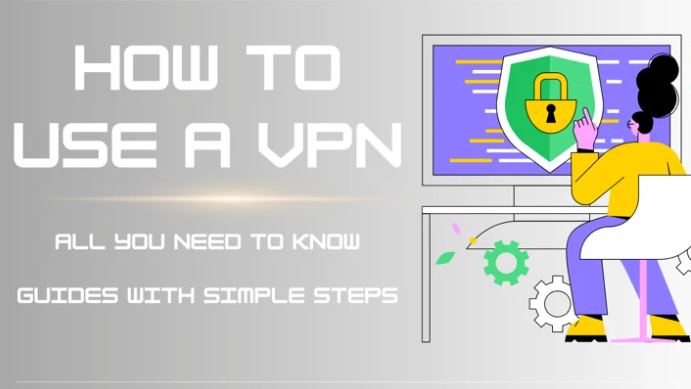How to Use a VPN A Step-by-Step Tutorial

You can use a VPN by downloading a product on the device, How to use a vpn setting it up according to your need, and connecting the server to let it work. Discover more tips from our blog!
In today's digital age, maintaining online privacy and security has never been more crucial. One of the most effective tools to safeguard your online activities is a Virtual Private Network (VPN). This comprehensive guide will walk you through everything you need to know about using a VPN, from downloading and setting it up to connecting to servers and understanding its benefits.
What is a VPN and Why Do You Need It?
A VPN, or Virtual Private Network, is a service that creates a secure and encrypted connection between your device and the internet. By masking your IP address and encrypting your data, a VPN ensures that your online activities remain private and secure. This is especially important for protecting sensitive information, accessing geo-restricted content, and maintaining anonymity while browsing the web.
How to Choose the Right VPN
When selecting a VPN, it is essential to consider several factors to ensure you choose the best one for your needs:
- Security Features: Look for VPNs that offer strong encryption protocols (e.g., AES-256), a no-logs policy, and advanced security features such as a kill switch and DNS leak protection.
- Server Locations: A VPN with a broad network of servers across various countries allows you to bypass geo-restrictions and access content from different regions.
- Speed and Performance: Opt for a VPN that provides high-speed connections to ensure a smooth browsing and streaming experience.
- Ease of Use: Choose a VPN with a user-friendly interface and reliable customer support.
Step-by-Step Guide to Download and Install a VPN
1. Selecting a VPN Provider
First, select a reputable VPN provider that meets your security and performance requirements. Popular options include NordVPN, ExpressVPN, and CyberGhost. Visit the provider's website and choose a subscription plan that fits your needs.
2. Downloading the VPN Software
Once you've chosen a provider, download the VPN software compatible with your device's operating system (Windows, macOS, Android, iOS). The download link is usually available on the provider's website or app store.
3. Installing the VPN
After downloading the installation file, open it and follow the on-screen instructions to install the VPN software on your device. This process is typically straightforward and involves agreeing to the terms and conditions and selecting the installation location.
4. Setting Up the VPN
Launch the VPN application and log in using your account credentials. You may need to complete an initial setup process, which can include configuring basic settings such as the VPN protocol and auto-connect options.
Configuring Your VPN for Optimal Performance
1. Choosing the Right VPN Protocol
VPNs offer various protocols, each with different strengths and weaknesses. Common protocols include OpenVPN, WireGuard, and IKEv2/IPsec. For most users, OpenVPN strikes a balance between security and performance, while WireGuard is known for its speed.
2. Connecting to a VPN Server
To connect to a VPN server, open the application and select a server location based on your needs. For instance, if you want to access content available in the UK, choose a server located in the UK. The VPN will establish a secure connection, and your IP address will be masked.
3. Enabling Advanced Features
Most VPNs offer advanced features such as split tunneling (allowing you to choose which apps use the VPN), ad blocking, and auto-connect. Enable these features based on your preferences to enhance your VPN experience.
Benefits of Using a VPN
1. Enhanced Online Privacy
A VPN masks your IP address and encrypts your online traffic, making it difficult for third parties, such as advertisers and hackers, to track your activities. This is crucial for protecting your personal information and maintaining your anonymity.
2. Access to Geo-Restricted Content
With a VPN, you can bypass geo-restrictions and access content that may be unavailable in your region. Whether it's streaming services, websites, or online stores, a VPN allows you to view content as if you were in a different location.
3. Secure Public Wi-Fi Connections
Public Wi-Fi networks are often unsecured and vulnerable to cyberattacks. By using a VPN, you can protect your data from potential threats and ensure a secure connection while using public Wi-Fi.
4. Bypassing Censorship
In countries with internet censorship, a VPN can help you access blocked websites and services. By connecting to servers in countries with more open internet policies, you can freely browse the web without restrictions.
- Whats New
- Shopping
- Wellness
- Sports
- Theater
- Religion
- Party
- Networking
- Music
- Literature
- Art
- Health
- Games
- Food
- Drinks
- Fitness
- Gardening
- Dance
- Causes
- Film
- Crafts
- Other/General
- Cricket
- Grooming
- Technology

